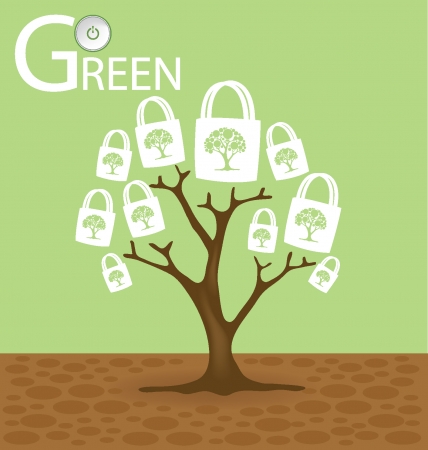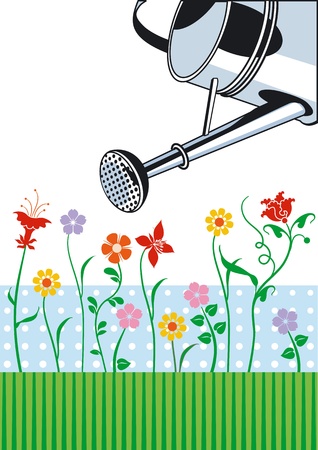Introduction to Bee-friendly Gardening in Britain
Have you ever watched a busy bee weaving through the flowers on a sunny afternoon, perhaps with your little one by your side? Bees are more than just delightful garden visitors—they are essential pollinators, quietly underpinning our food supply and the health of our countryside. In Britain, where we treasure our green spaces and rolling meadows, bees play a starring role in keeping our gardens vibrant and productive. Yet, as families enjoy outdoor moments together—pottering among pots, exploring hedgerows, or planting seeds—the gentle hum of bees is growing fainter. Loss of wildflower habitats, changing weather patterns, and widespread use of pesticides present unique challenges for our buzzing friends here in the UK. Still, there is hope and inspiration to be found! With thoughtful planning and a sprinkle of creativity, British gardens can become year-round sanctuaries for bees. By understanding their seasonal needs and working hand-in-hand with nature (and perhaps a curious child or two), we can nurture a thriving environment that supports both local wildlife and precious family memories. This journey begins with appreciating why bees matter and discovering how each one of us can make a difference—in every window box, back garden, or schoolyard across Britain.
Understanding the Needs of British Bees
Creating a bee-friendly garden in Britain starts with understanding what our native bees need to thrive. Much like nurturing children, every bee species has its own unique requirements for a happy, healthy life. By tuning into these needs—shelter, food, and safety—we can build gardens that buzz with life all year round.
Shelter: A Home for Every Bee
British bees come in many varieties, from the well-loved bumblebee to solitary mining and mason bees. Each seeks different homes: some prefer old hollow stems or loose mortar in walls, while others nest underground or in compost heaps. The unpredictable British weather, from spring showers to chilly autumn winds, means shelter is essential for their survival.
| Bee Type | Preferred Shelter | Garden Tip |
|---|---|---|
| Bumblebee | Long grass, compost heaps | Leave an untidy patch or compost corner |
| Mason Bee | Holes in wood or masonry | Install bee hotels with tubes of various sizes |
| Mining Bee | Bare, sandy soil patches | Keep a small area of exposed soil free from mulch |
Pollen and Nectar: Year-round Forage
Just as we rely on regular meals, bees need consistent access to pollen and nectar throughout the seasons. British weather brings early springs and late frosts; thus, planting a variety of native flowers that bloom from February through October helps ensure bees never go hungry—even when the skies are grey.
A Seasonal Guide to Supporting Bees:
| Season | Flowering Plants | Bee Activity Level |
|---|---|---|
| Spring (Feb–Apr) | Crocus, Snowdrop, Willow catkins | Queen bees emerge; need energy after hibernation |
| Summer (May–Aug) | Lavender, Foxglove, Borage, Clover | Nest building and brood rearing peak |
| Autumn (Sept–Oct) | Ivy, Michaelmas daisy, Sedum | Bees stock up before winter slowdown |
| Winter (Nov–Jan) | Mahonia, Winter heather (where mild) | Sporadic activity during mild spells; vital forage for hardy species |
The Impact of British Weather on Bee Life Cycles
The famously changeable British climate means bees are always adapting. Wet springs can delay queen emergence; cold snaps may reduce available forage. By providing diverse shelter and continuous blooms, we give our fuzzy friends the best chance to flourish—no matter what the weather brings. In this way, our gardens become safe harbours amid the storms and sunshine alike.

3. Choosing Plants for Every Season
One of the most magical ways to nurture our buzzing friends is by creating a garden that offers them food all year round. In Britain, where the seasons can be as unpredictable as a toddler’s mood, it’s important to select a variety of flowers and shrubs that bloom at different times. This ensures bees have a constant supply of nectar and pollen from the first gentle days of spring right through to the golden glow of late autumn.
Spring: Welcoming Early Risers
As winter loosens its grip, early-flowering bulbs like crocuses, snowdrops, and native daffodils are among the first treats for emerging bees. Flowering currants (Ribes sanguineum) and lungwort offer splashes of colour and vital sustenance when little else is awake in the garden.
Summer: A Buzzing Banquet
When summer arrives, fill your borders with classic British cottage favourites such as lavender, foxgloves, catmint, and borage. These not only delight our senses but also act as irresistible invitations to bees. Herbs like thyme and chives provide both beauty and bounty—encouraging family foraging for kitchen use alongside bee feasting!
Autumn: Sustaining Through the Twilight
As daylight shortens, late-blooming plants become crucial. Sedums, Michaelmas daisies (Aster), and ivy flowers ensure the final generations of bees stock up before winter. Remember, shrubs like mahonia and heather can also extend the buffet deep into autumn or even offer winter forage on milder days.
Together in Every Season
By thoughtfully layering bulbs, perennials, annuals, and flowering shrubs throughout your patch—whether a grand garden or a few pots on a balcony—you create a living calendar for your family and local bees alike. This shared adventure lets little ones see how each season brings new colours and visitors, nurturing wonder and care for nature’s cycles right outside your door.
4. Creating Shelter and Safe Havens
If we want our gardens to be truly bee-friendly all year round here in Britain, offering shelter is just as vital as providing food. Think of your garden as a welcoming home—bees need cosy corners, just like children love secret dens for play and rest. With a bit of inspiration from nature, you and your family can create safe spaces that support bees through every season.
Building Bee Hotels: A Fun Family Project
Crafting a bee hotel is not only delightful but also educational for little ones. Solitary bees, such as mason and leafcutter bees, seek out small holes to nest in. Gather together hollow stems (like bamboo), untreated wood blocks with drilled holes, or even bundles of elderberry twigs. Assemble these into a weatherproof container—perhaps an old wooden box—and place it facing south or southeast for morning sun warmth. Encourage children to help decorate the hotel’s exterior, making it inviting for both bees and people alike.
Best Materials for Bee Hotels
| Material | Why Bees Love It | Where to Find/How to Use |
|---|---|---|
| Bamboo Canes | Perfect diameter for nesting tubes | Garden centres or recycle old canes; cut into 15cm lengths |
| Untreated Wood Blocks | Customisable hole sizes for different bees | Drill holes (6-10mm wide) into blocks; avoid treated wood |
| Straw & Hollow Stems | Mimic natural nest sites found in wild meadows | Gather after autumn pruning; bundle together tightly |
| Bark & Pine Cones | Shelter for overwintering insects and pollinators | Add around hotels for extra hiding spots |
Leaving Wild Patches: Embracing the British Countryside Spirit
While manicured lawns have their charm, a true haven for bees includes untidy nooks and wild patches. Let some grass grow long at the garden’s edge or leave piles of leaves and logs undisturbed. These mimic the hedgerows and woodlands so beloved in the British countryside, providing cover from rain and chilly winds, plus safe places to lay eggs or hibernate.
Simple Tips for Wild-Friendly Spaces:
- Select a Corner: Choose a sunny, quiet spot away from heavy foot traffic.
- Let Nettles Grow: Many pollinators love nettles—just keep them contained if needed.
- Pile Logs & Stones: Stack loosely to create crevices for sheltering bees and other wildlife.
- Avoid Disturbance: Resist tidying up these areas until spring is well underway.
Nurturing with Natural Materials: An Invitation to Imagination
The next time you’re out with your children, gather fallen branches, pine cones, or even broken terracotta pots. These can all become part of your bee haven—lining borders, tucking under shrubs, or building little shelters beneath bushes. Bees will find safety from British rain showers and blustery winds, while your family learns about nature’s resourcefulness through hands-on creativity.
5. Garden Care with Bees in Mind
When you’re tending your garden in Britain, every little action can make a big difference to our beloved bees. By choosing practical, eco-friendly routines, you help transform your outdoor space into a safe haven where both children and pollinators can thrive together. Here are some nurturing habits to adopt:
Pesticide Alternatives: Nature’s Own Solutions
Instead of reaching for chemical pesticides, try natural remedies like neem oil, soap sprays, or companion planting—growing marigolds and chives among your veggies can keep pests away without harming bees. Involve your children by letting them help mix up a gentle garlic spray or hunt for aphid-loving ladybirds together, turning pest control into a fun family mission that respects nature’s balance.
Gentle Lawn Practices: A Buzzing Welcome Mat
Letting parts of your lawn grow wild, or mowing less frequently, provides shelter and food for bees. Encourage clover and dandelions to flourish—these “weeds” are actually vital early nectar sources. You might even create a mini wildflower patch with your little ones, watching it become a favourite bee café over the months. Avoid using weedkillers; instead, hand-weed with curious young gardeners at your side, teaching them how every plant has a role in the garden’s story.
Water Sources: Refreshment for Busy Bees
Bees get thirsty too! Offer shallow water dishes filled with pebbles so they can land safely for a drink. Change the water regularly to keep it fresh and mosquito-free. Involve your children by letting them decorate bee baths with colourful stones or shells—each refill becomes an act of kindness that helps sustain visiting pollinators throughout the year.
By weaving these gentle routines into your gardening rhythm, you’ll create a truly bee-friendly sanctuary that nurtures both wildlife and family connections—one season at a time.
6. Involving the Whole Family
Designing a year-round bee-friendly garden in Britain is not just about planting the right flowers—it’s a wonderful opportunity for the whole family to bond, learn, and grow together. By involving children in every step, from sowing seeds to spotting bees flitting between blooms, you nurture both their curiosity and their sense of responsibility for the natural world.
Hands-on Activities for Little Gardeners
Encourage your children to help choose bee-friendly plants, such as lavender, foxgloves, or wild marjoram. Let them get their hands dirty by sowing seeds and watering seedlings. Together, you can create simple bee hotels using hollow stems or bamboo canes—perfect for observing solitary bees up close.
Observation and Discovery
Set aside time each week for “bee spotting” adventures in your garden. Provide notebooks so children can record different types of bees they see, note which flowers are most popular, and sketch their favourites. This not only sharpens observation skills but also sparks conversations about British wildlife and biodiversity.
Learning Through Stories and Crafts
On rainy days, bring the outdoors in with bee-themed storybooks and creative crafts. Make paper bees or decorate plant markers together. Use this time to talk about why bees are vital to British gardens and how everyone can help pollinators thrive all year round.
Nurturing Curiosity and Care
By connecting with bees as a family, you cultivate empathy and wonder that extends beyond the garden fence. Children who marvel at these hardworking pollinators today become tomorrow’s stewards of nature, caring for all creatures great and small—right here at home in Britain.


